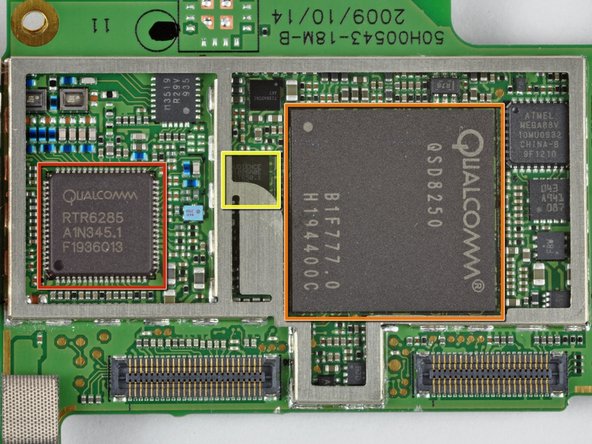We’ve made a lot of friends in the electronics manufacturing and semiconductor industries over the years as we’ve taken apart cutting-edge hardware. One of those friends is a Canadian semiconductor reverse engineering company that has made a name for itself deconstructing silicon packages and analyzing the circuitry inside. In essence, they do the same thing that we do—tear products apart to find out what’s inside—but with much, much smaller devices. Chipworks is based in Ottawa, Ontario– where they tell me it gets cold enough in the winter that the rubber in your car tires can crack.
The engineers at Chipworks were especially intrigued by our Nexus One teardown, so much so that they decided to pick up where we left off by dissecting the circuit board!
What you may not know about the black ceramic ‘chips’ that we uncover is that they are actually packages that contain one or more super-thin silicon dies. In fact, Apple’s Samsung-manufactured iPhone processors have three stacked dies: the processor itself, and two layers of DRAM. This technology is called Package on Package, or PoP, and we are starting to see it in more and more devices. In fact, one company is working on technology to stack up to 32 dies in a single package.
So it was no great surprise to us when Chipworks discovered that the Nexus One’s 1Ghz Qualcomm Snapdragon processor is also a PoP. What does this look like?
Three layers of silicon:
The Audience A1026 audio processor was another interesting part that caught people by surprise in the Nexus One. This processor does the heavy lifting required to actively cancel out background noise using input from the phone’s unique binaural microphones. Audience is a new company to us, and Chipworks was so intrigued that they decided to take a close-up look at their silicon.Each of these layers is just 40 micrometers, or 0.040 mm thick. That’s just about the thickness of a human hair.

Chipworks found that most of the silicon in the Nexus One was manufactured in October of 2009, which is quite late considering that we took delivery of the phone in mid January. In fact, these manufacture dates are after the week 40 manufacture time of the A4 processor in Apple’s photo of the iPad (granted, that photo was likely of a preproduction part). HTC is running clearly running a tight shop.
Chipworks pays for their labs full of high-end electron microscopes, X-ray photography equipment, and vats of semiconductor ceramic-eating acid by selling high-resolution photos like these to semiconductor companies. If you’re the kind of person who needs photos like this, you don’t need us to tell you that you can buy them from Chipworks. What we can tell you is that their engineers are quite good at what they do. Canadian gold, even.




0 comentários